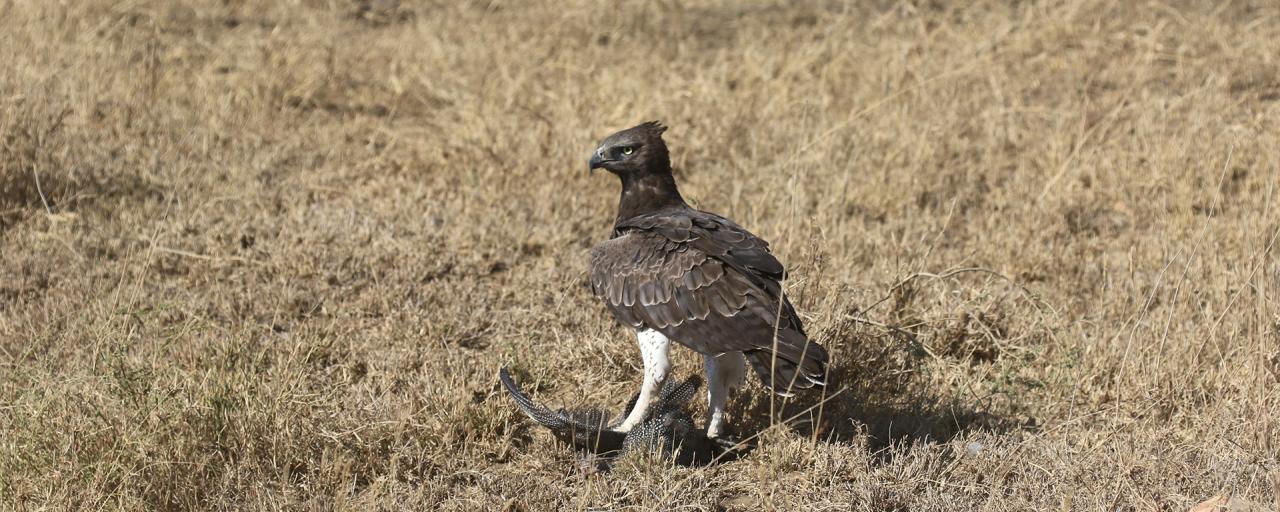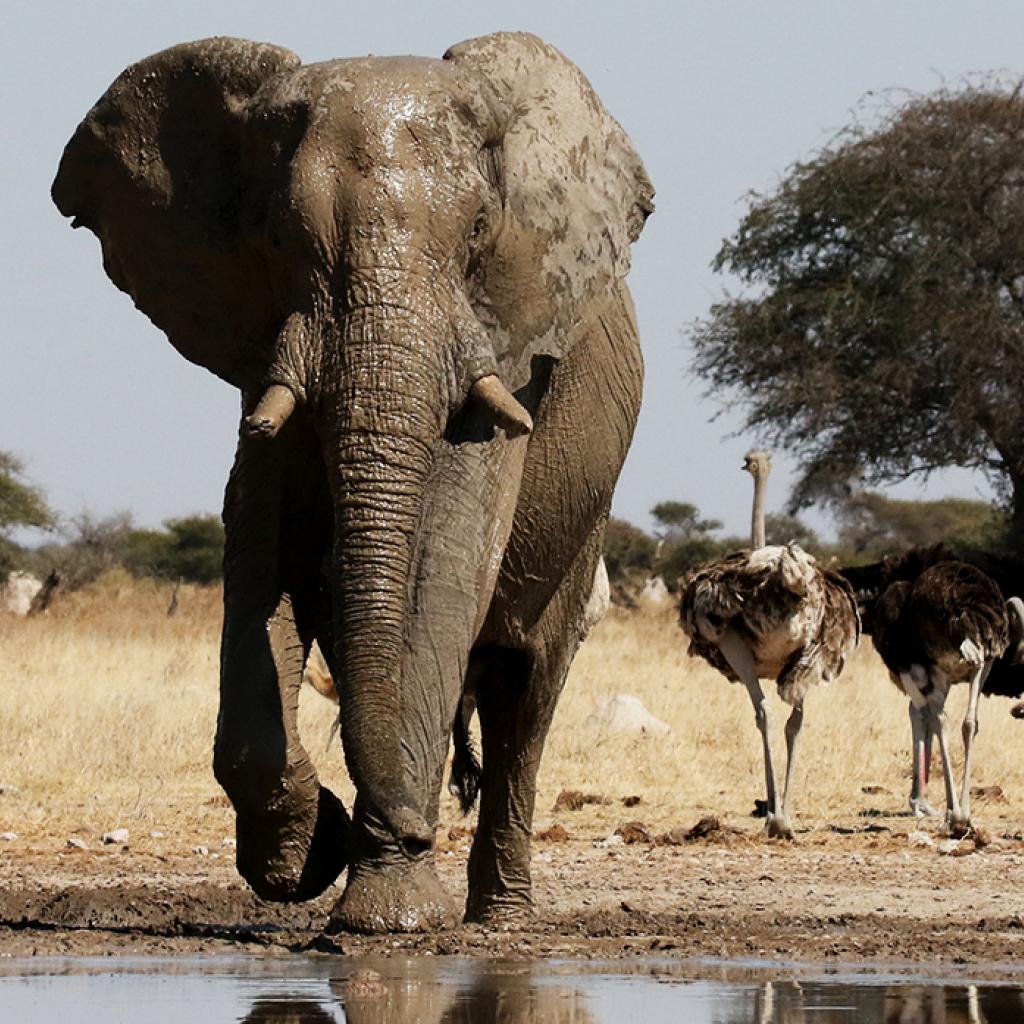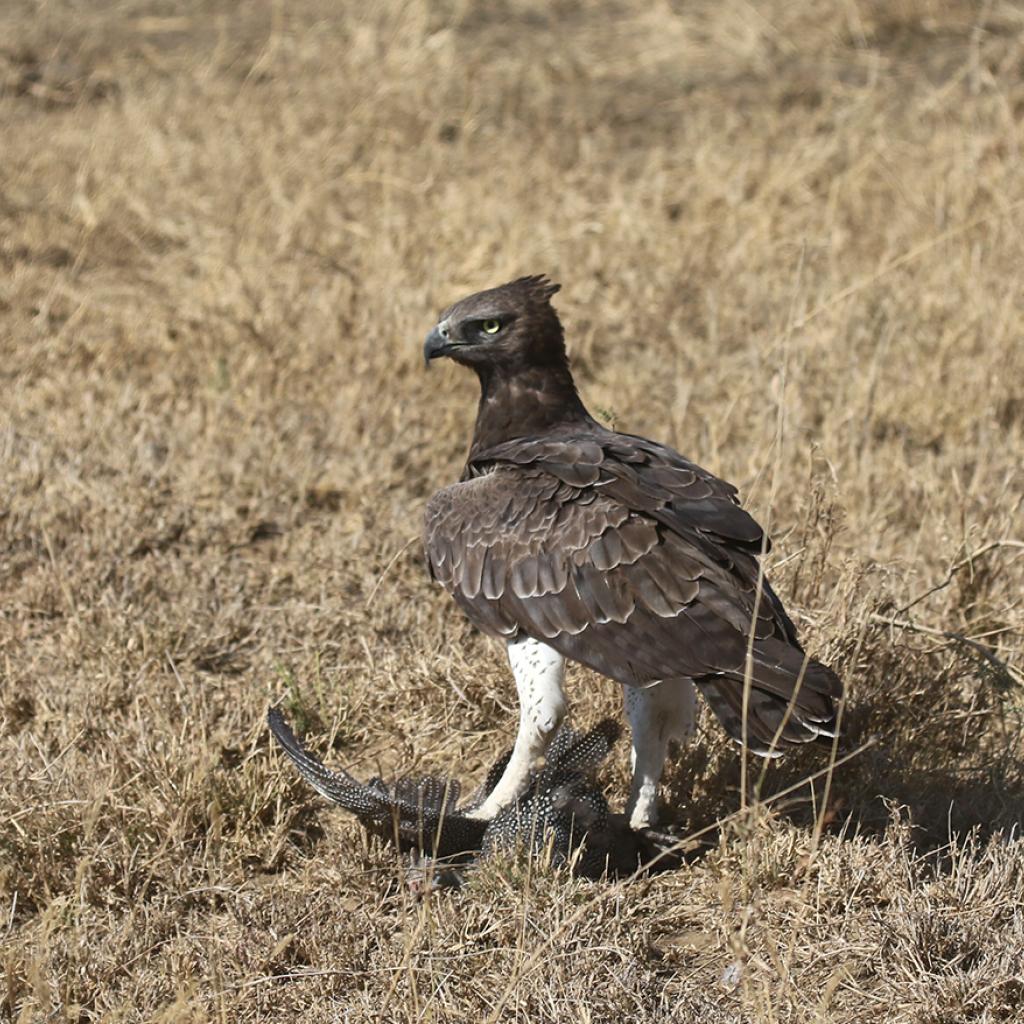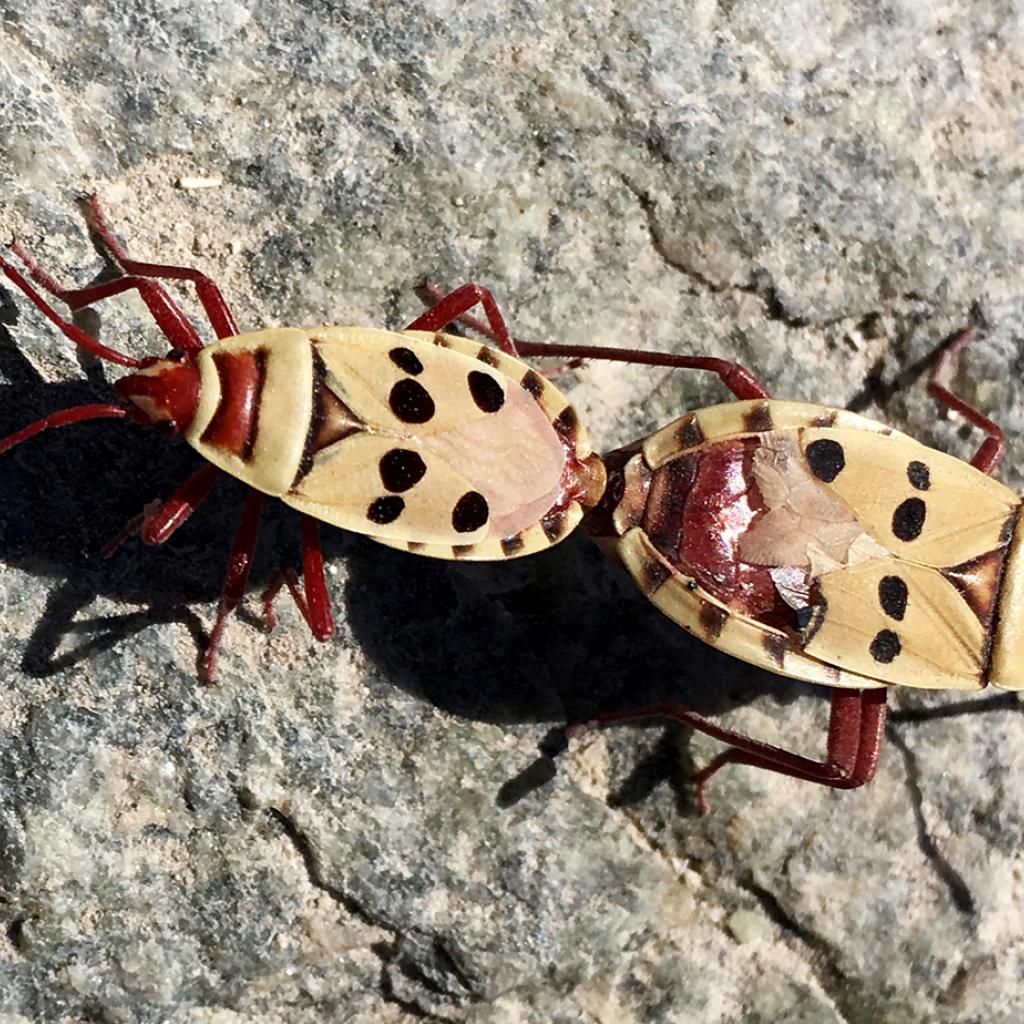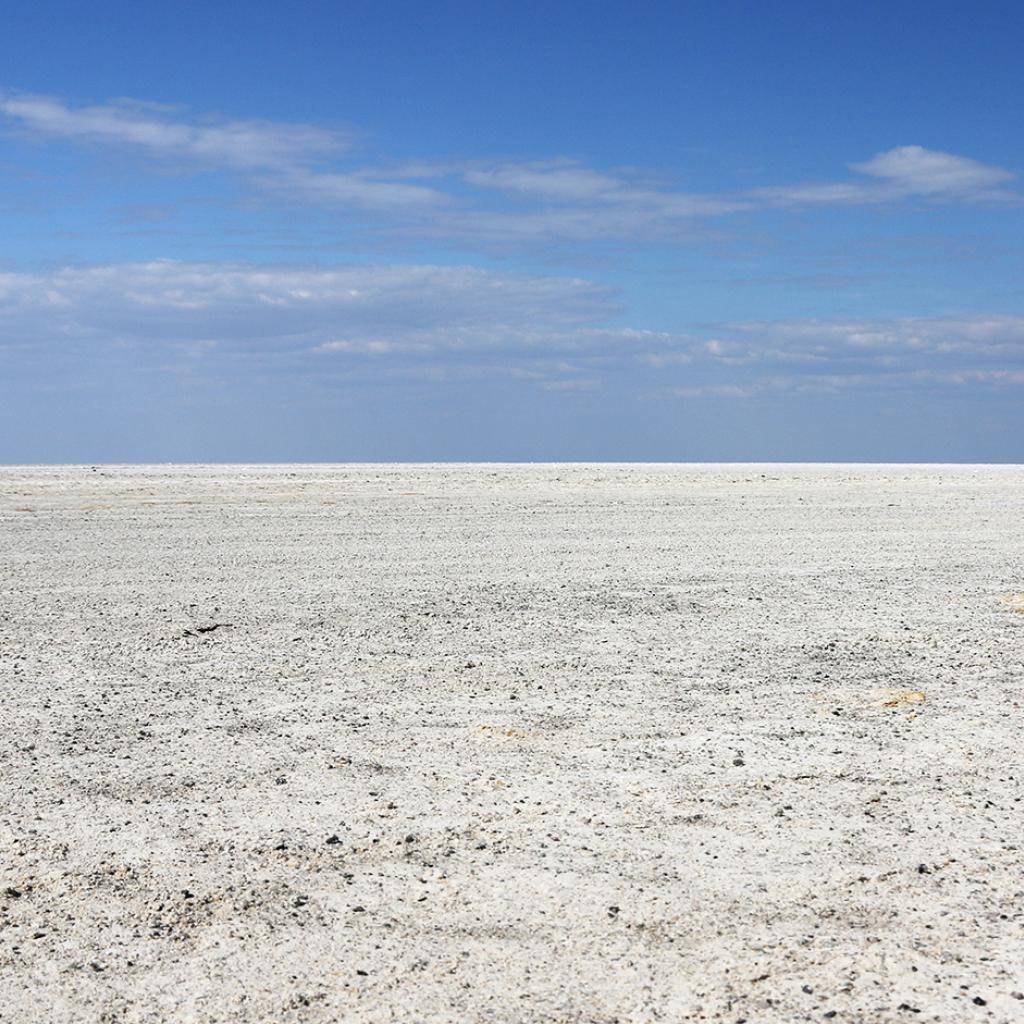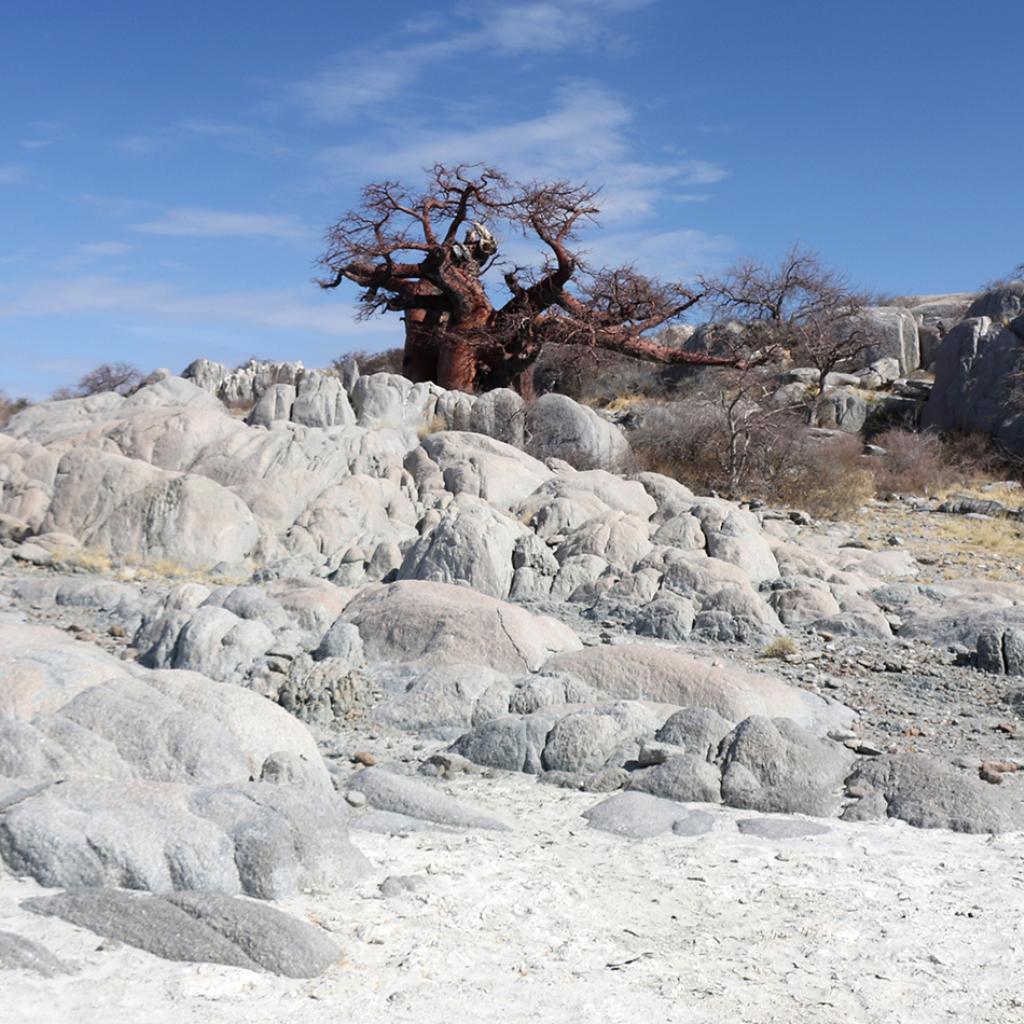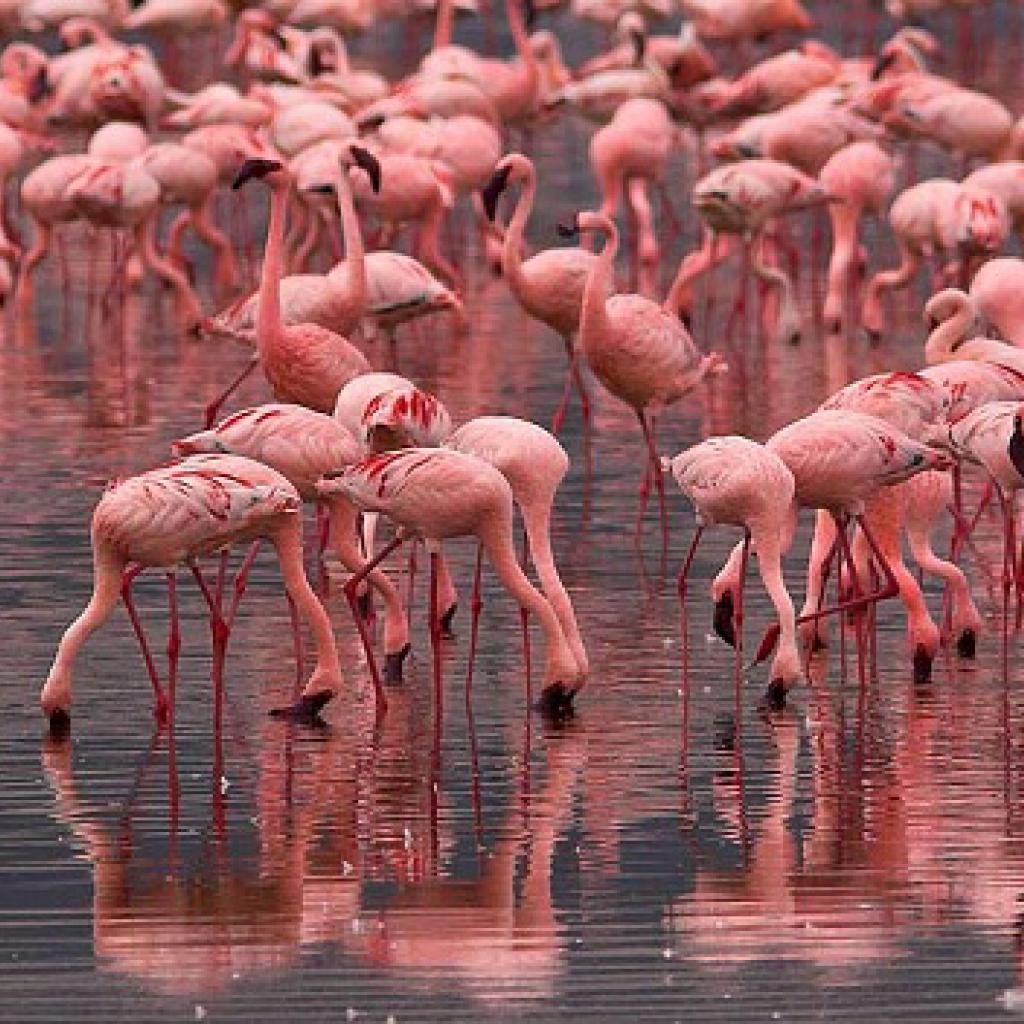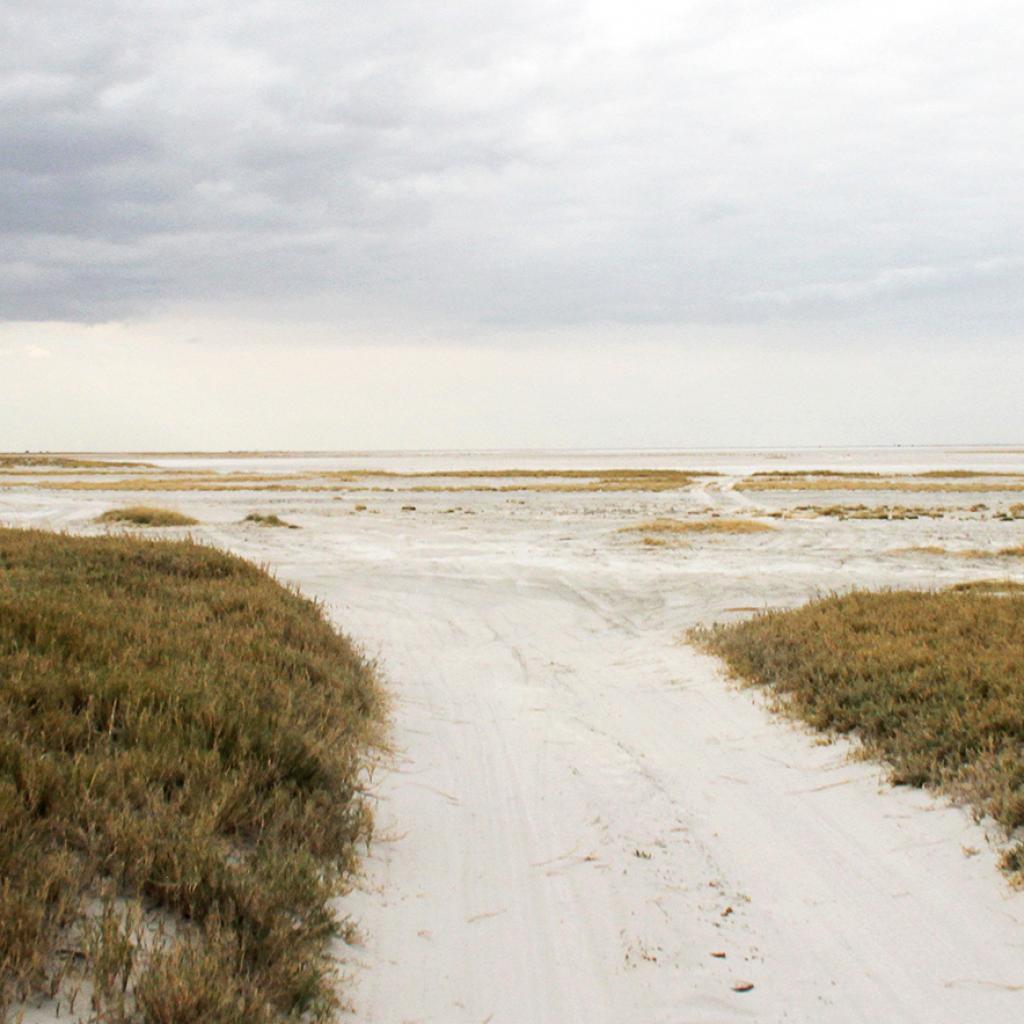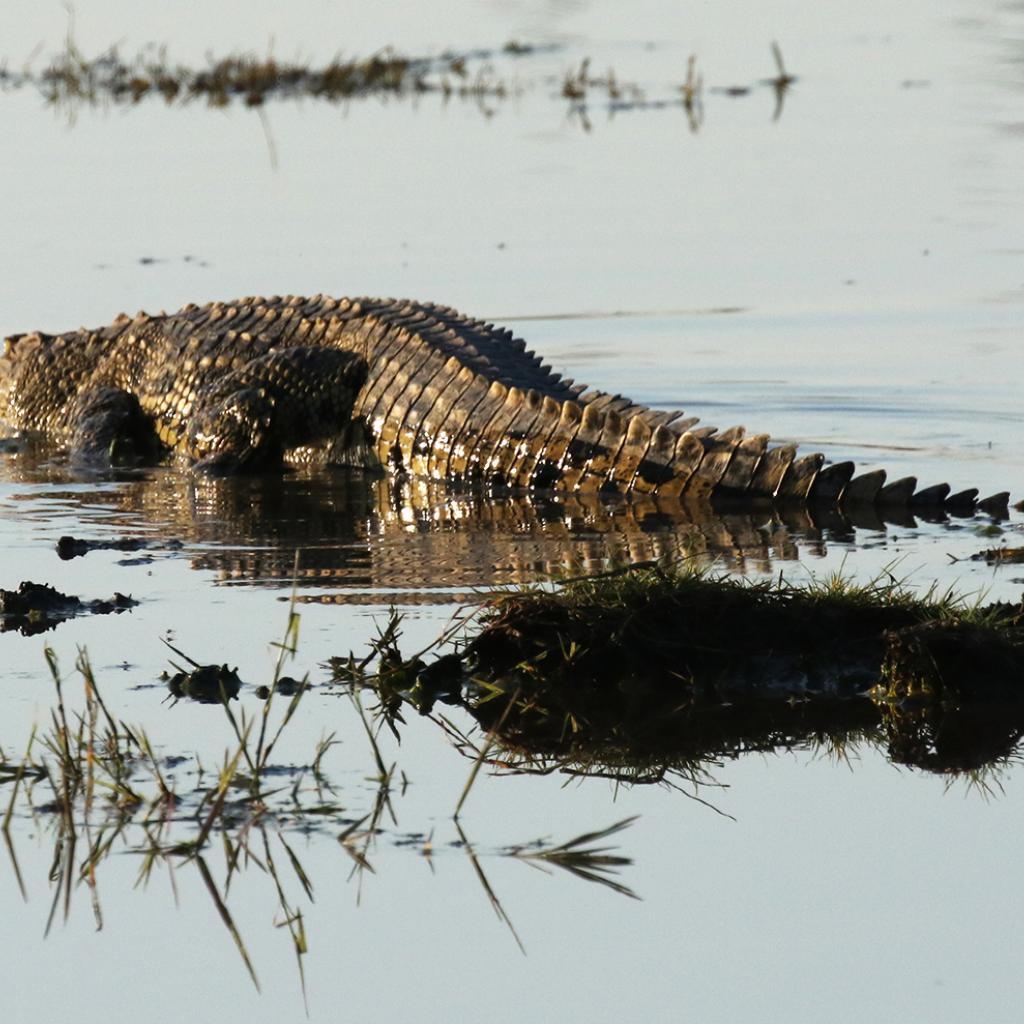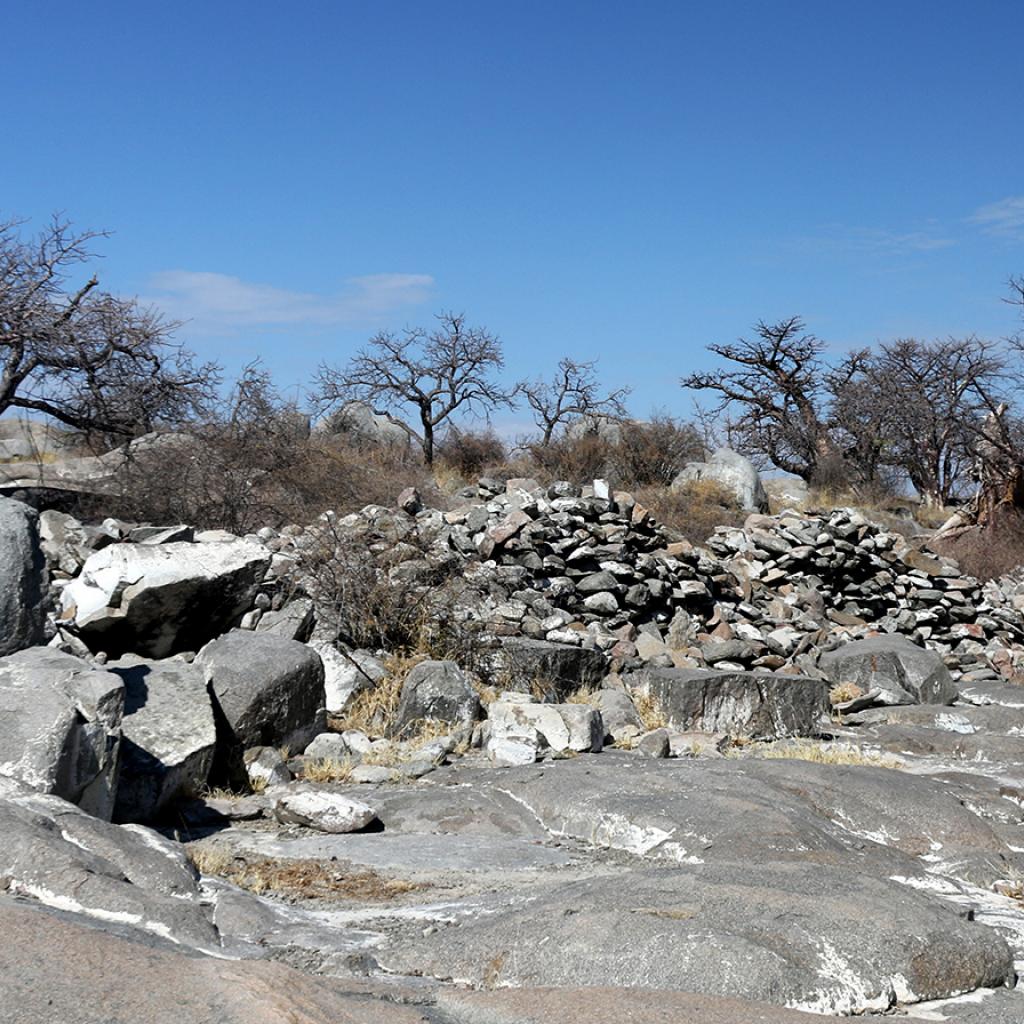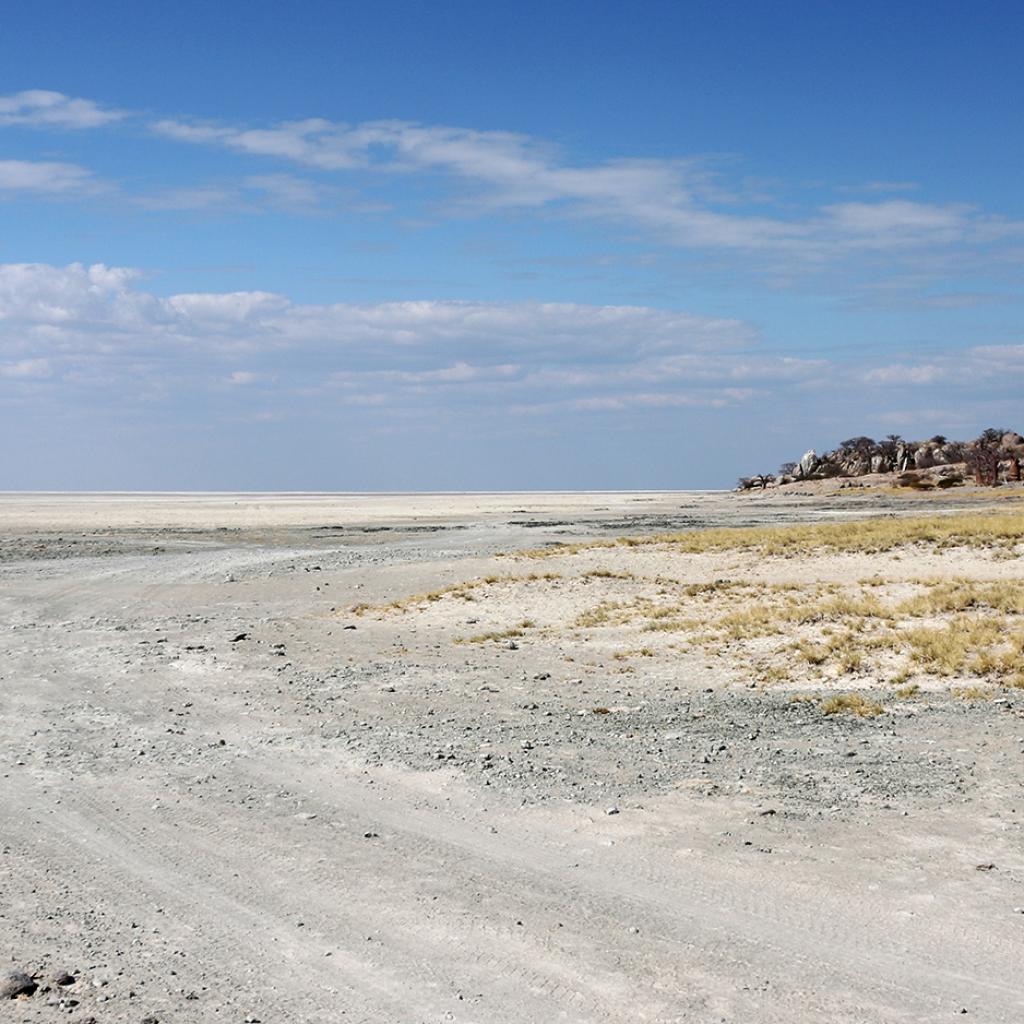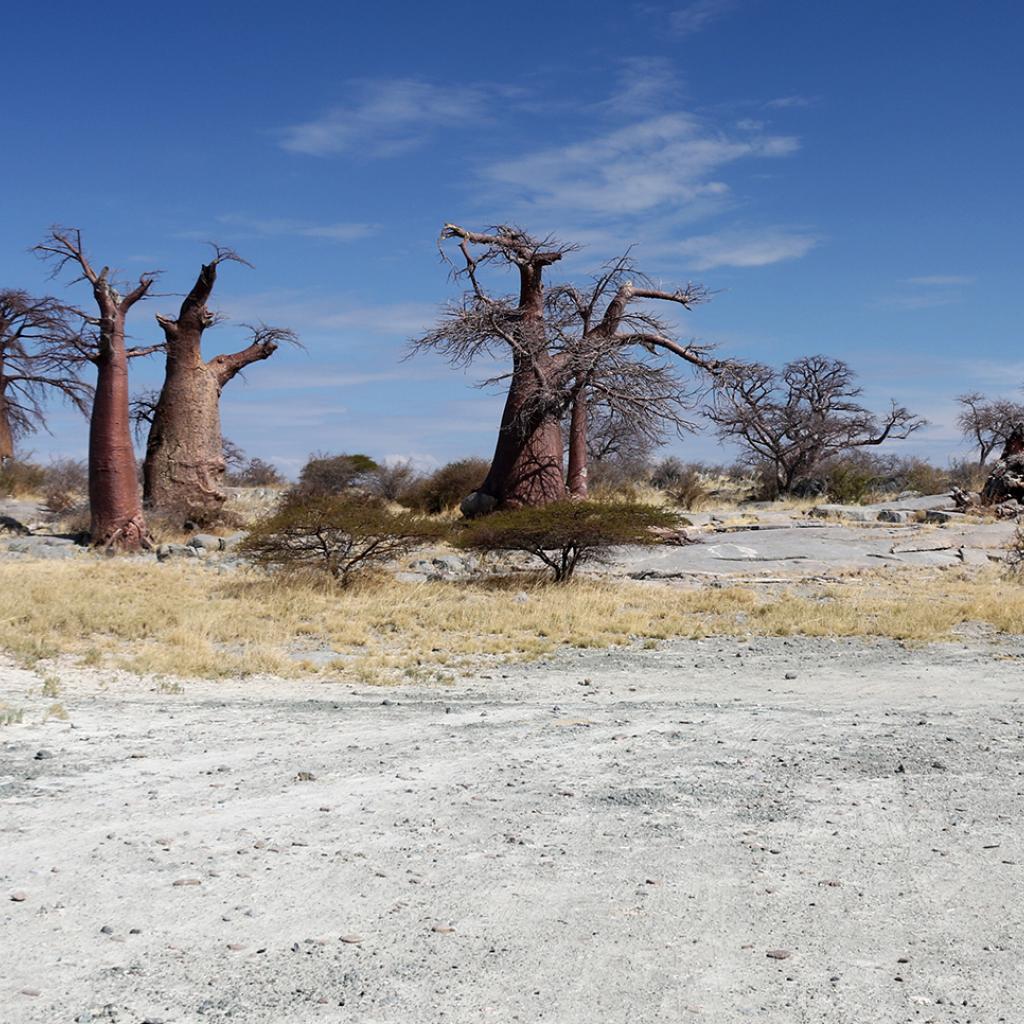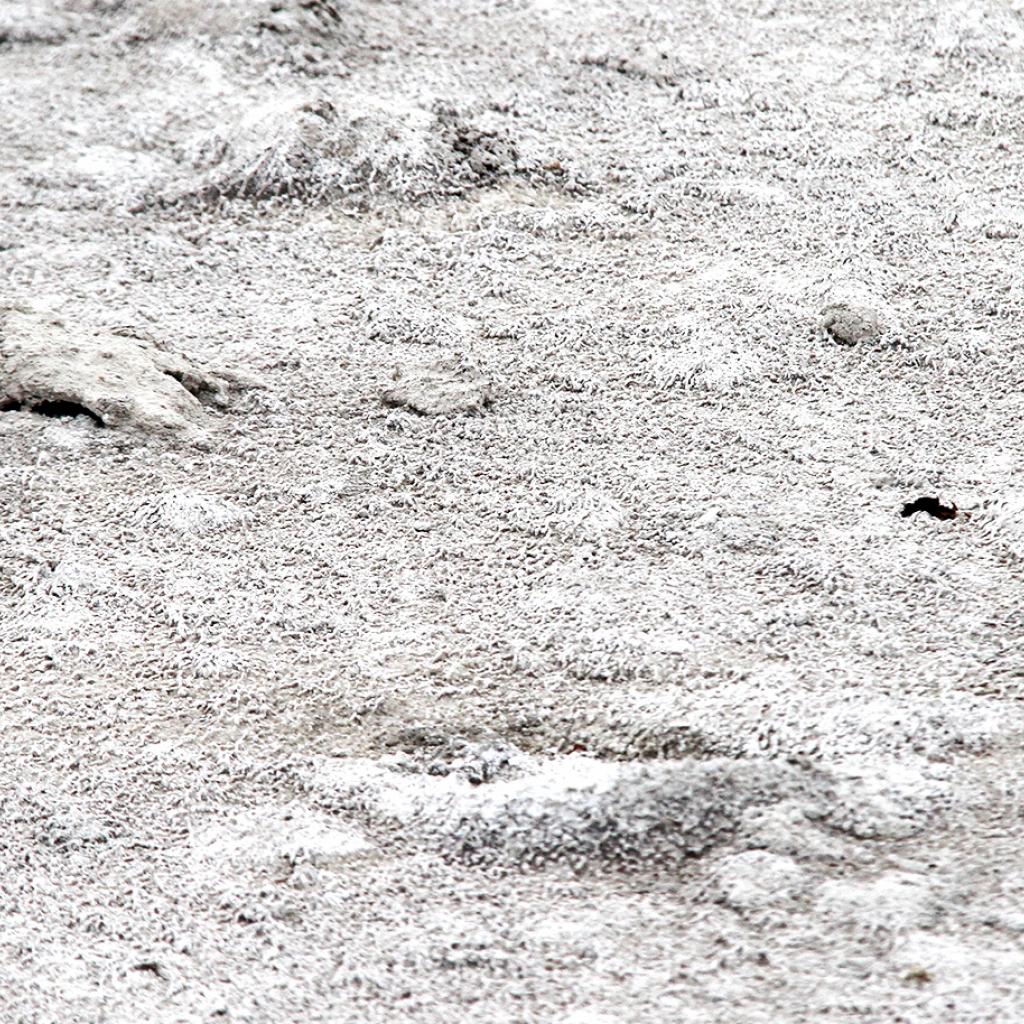Despite the semi-arid climate, the Makgadikgadi Pans complex is one of the areas in Botswana known to birdwatchers, especially near the delta of the Nata river, during the rainy season; 255 species of birds have been recorded throughout the Makgadikgadi Pans complex.
In the summer months, from December to April, when the rains are abundant, in the North-Eastern part of the Sua Pan, where the Nata river spills over the salt expanse, many species of birds are concentrated, in particular the pelicans and the flamingos.
Here you can find both the greater pink flamingos and the lesser pink flamingos, coming to this place to mate and to lay their eggs in conical nests, built with the clay of the ground; this is one of the most important breeding sites in the world for these birds, certainly it is the most important place in Southern Africa, and here you can find up to over 100,000 specimens.
Observing the Pan from above in this period is a wonderful experience, you see a completely pink expanse on the lake.
Here the flamingos find food in great quantity during the rainy period: the greater pink flamingos feed on some shrimps and small crustaceans living in brackish and alkaline waters; while the lesser pink flamingos feed on algae that grow in salty and warm waters.
The arrival of flamingos is a very difficult phenomenon to predict, much depends on when the rains begin and if they are abundant; for the flamingos in fact it is a fight against time, they must reproduce, lay eggs, hatch them and make sure that the chicks are able to fly before the water of the salt lake dries up, if the water dries up too soon, the little ones will not be able to fly anywhere else and they will die of hunger.
The Nata Sanctuary Bird is located right in the area where the flamingos are concentrated and its mission is to preserve this delicate and important habitat.
Here, during the rainy season, many other species of birds also gather, such as pelicans, both the great white pelican and the pink-backed pelican, herons, egrets, cormorants, the African darters, the waders, including the avocets, the black-winged stilt, the blacksmith lapwing, the wood sandpipers and the ruffs; there are also the black-necked grebes, the red-knobbed coots and some ducks including the red-billed teal ducks and the white-faced ducks.
Other species of birds, that are typical of the Okavango Delta, sometimes venture here during the rains, among them the African fish eagle, the saddle-billed stork and, rarely, the wattled crane.
The reedbeds are the ideal habitat for the weavers, the bishops and the African reed warblers.
The open grasslands surrounding the Sua Pan are home to some typical species of the Kalahari Basin that nest on the ground, such as the ostriches, the Kori bustards and the secretary birds; in addition there are some species that instead nest under the ground, among these are the capped wheatear and the ant-eating chat.
In the area around the pan are present all four species of African sandgrouse: the Namaqua sandgrouse, the Burchell's sandgrouse, the double-band sandgrouse, the yellow-throated sandgrouse; usually they are sighted towards evening, when they fly towards a waterhole emitting their calls.
The males enter the water walking to immerse the feathers of their abdomen, these feathers are absorbing and collecting the water, in this way the sandgrouses can carry water to the chicks, that are even miles away in their nests.
During the day, instead, you can see the Northern black korhaan walking through the grass with its long yellow legs, emitting its typical sound, similar to "karak, karak, karak" or flying in circles to monitor its territory; when they are on the ground, like all the other bustards and korhaans, they use their plumage to camouflage themselves.
Another common species is the double-banded courser, that has perfectly adapted to the extreme conditions of life in the Makgadikgadi Pans; this bird does not need water to live and can resist the excessive heat of salty surfaces, while protecting its eggs from high temperatures.
The Makgadikgadi Pans are predominantly flat, so each raised spot is the optimal place for birds.
The baobabs of Kubu Island for example are one of the places where it is easy to see them perched and where they build their nests, you can spot the barn owls and the rollers, both the lilac-breasted rollers and the purple rollers.
While on the date palms, that are near the rivers, are the swifts of African palm swifts, that usually nest on the palms, and occasionally some couple of red- necked falcons.
While the secretary birds and vultures prefer to build their large and disordered nests on isolated thorns.
Other species of birds, that survive even during the winter months in the Pan, are the ostriches, the chestnut-banded plovers and the Kittlitz's plovers.
In the wooded areas of acacia you can find a large number of bird species, such as those found in the Nxai National Park, that is part of the Makgadikgadi Pans complex.
It is possible to sight the red-billed francolins or spurfowls, the white-browed robins or the common violet-eared waxbills; while the lilac-breasted lilacs and the long-tailed shrikes or Magpie shrikes usually lurk on the highest branches of the trees to spot their prey.
The bateleurs and the martial eagles guard and fly over the skies in search of some prey; while the bulbuls, the babblers, the hornbills, the barbets, the sunbirds and the flycatchers remain on the tree branches of the most wooded areas.
In the area near the Nata Lodge, in the North-Eastern part of the Sua Pan, during the summer months, you can spot the common buzzards or steppe buzzards, the western red-footed kestrels and the yellow-billed kites that are added to the birds of prey that live here all year round, such as the greater kestrel, the pale chanting goshawk and the African marsh owl; after the heavy rains it is also possible to sight the Montague harrier and the pallid harrier while drifting the prairies with their elegant flight.
Other species of birds, that migrate here during the summer months, are the white storks, the red-backed shrikes, the lesser gray shrikes, the European bee-eaters and the Southern carmine bee-eaters.


